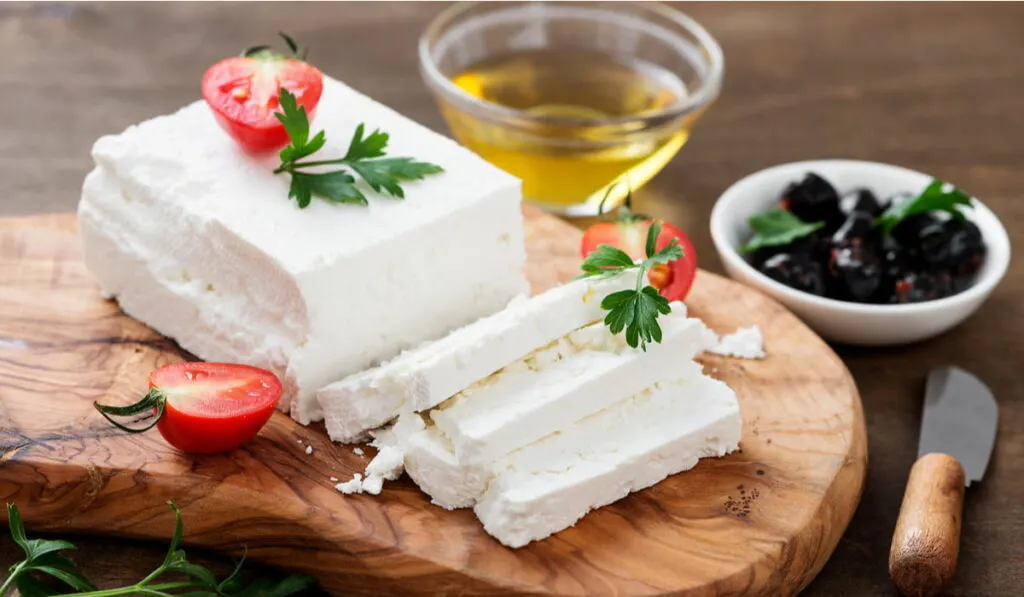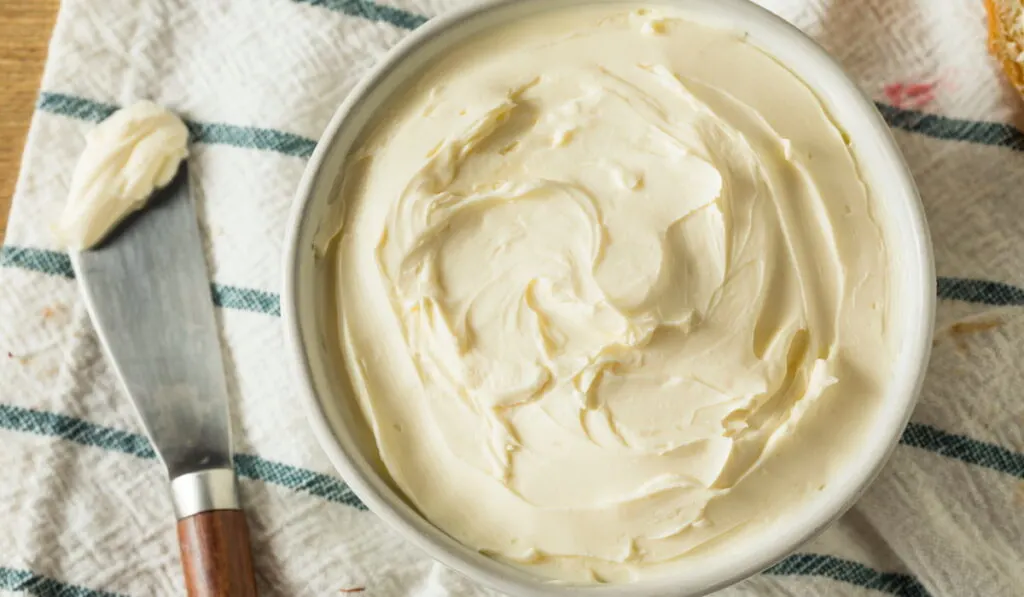Every cheese lover knows that cheese is best enjoyed fresh, but sometimes you can’t help but stock up. And then it’s a race against time to eat it all before it goes bad.
But what do you do if you can’t finish that big chunk of Swiss before it spoils? Or if you have way too much cheddar for your weekly cooking needs?
You freeze it! That’s right. Cheese can be frozen and still taste delicious. Well, most cheeses, at least.
So the next time you find yourself with an overload of cheese, don’t despair. Just pop some in the freezer, and you’ll be able to enjoy it later. Let’s take a look at different types of cheese that can be frozen and how to do it.
Table of Contents
Which Cheeses Are Suitable to Be Frozen for Later Use?
The more the water content in the cheese, the less likely it is to freeze well. That’s because water turns into small crystals that damage the structure, and when you thaw it, the cheese will often be crumbly and not as flavorful.
That’s why hard and semi-hard cheeses like cheddar, Swiss, and Edam cheese freeze well. So do some softer cheeses like goat and cream cheeses, with some extra care.
Cheeses like brie, ricotta, and chevre, on the other hand, do not freeze well because they contain too much water.
The 9 Best Types of Cheese That Can Be Frozen
1. Cheddar

Cheddar is a hard, aged cheese with a sharp, tangy flavor. It freezes well, and you can store it in the freezer for up to three months without it losing any of its flavor or texture.
2. Pecorino Romano

Another delicious hard cheese and a staple in most Italian dishes, pecorino romano, is also one of the most freezer-friendly cheeses. It stays perfect in the freezer for up to six months.
3. Provolone

An excellent choice for making sandwiches, Italian provolone is a semi-hard cheese. It can stay in the freezer for up to four months and still be in the best condition.
4. Gouda

This slightly sweet but nutty Dutch cheese is one of the most freezer-friendly ones. It has a semi-solid texture, so it can last for up to six months in the freezer.
5. Mozzarella

On average, mozzarella lasts for three to six months in the freezer. It all depends on the type of mozzarella. Shredded mozzarella freezes best and can last for six months.
Slices are also fine for freezing; however, if you have a big block, make sure you cut it into smaller pieces because it might become watery upon defrosting.
6. Edam

This semi-hard, aged cheese can last for three months when frozen. Make sure you cut the sphere into smaller pieces and wrap it in wax paper for best results.
7. Colby Jack

Both Colby and Colby jack cheeses freeze well. They can last for more than six months if kept below 0°F.
8. Monterey Jack

Like Colby jack, Monterey jack is also a good candidate for freezing. Shredded Monterey jack can last for up to six months in the freezer.
9. Swiss

Swiss is a very distinctive cheese with a nutty, sweet flavor. It’s best frozen in thick slices or big blocks and lasts for six months in the freezer.
4 Types of Cheese That Are Ok to Freeze But Might Lose Quality
10. Blue Cheese

Blue cheese is an umbrella term for various semi-soft, blue-veined cheeses. They have a strong, pungent flavor and can be frozen to increase shelf life.
But since it’s a fat-rich cheese, it starts to lose its flavor and texture over time, so use it within two months of freezing for best results.
11. Goat Cheese

Goat cheese comes in many different varieties, so it’s hard to generalize freezing instructions. But harder, drier goat cheeses freeze well. Just make sure to thaw them slowly in the fridge overnight.
12. Feta

Feta is a crumbly, salty cheese that becomes a tad bit drier when frozen. But a fresh, mold-free batch can last in the freezer for up to two months.
13. Cream Cheese

Another soft cheese variety, cream cheese, can stay frozen in an airtight container for two to three months. But it will lose some texture and will be a little grainy and crumbly once thawed.
Best Way to Freeze Cheese? A Complete Guide
Depending on the texture and types, there are several methods for preparing and packing cheese for freezing. And then proper thawing is key to avoiding any food safety issues. Let’s go over the complete method of freezing cheese below.
Preparation
If you have big chunks of cheese, first break them down into smaller pieces. Small bits give more space for water to crystalize, so the cheese can freeze evenly. It also makes it simpler to defrost the quantity of cheese required. Here are your options.
1. Shred:
Shredding is by far the most effective way to prepare cheese for freezing. Pre-shredded cheese is suitable for storage. It’s also great for melting since you can just add frozen shreds to your casserole, pasta, or whatever dish you’re preparing.
2. Cube:
Cut the big block into one-inch cubes, at least. The smaller the pieces, the better. This is the best option for feta cheese and other crumbly types.
3. Slice:
Slicing is another good option. Try to make slices thin, and separate each slice with parchment paper for storing.

Packing
Packing is the most important part of keeping the cheese in good condition. You can either use zip lock bags or freezer containers if you have space for them.
First, if you have a large portion, divide it into small quarter-pound batches. Then wrap each batch in the original packing or in a zip lock freezer bag. Then cover it with a layer of cling wrap; aluminum foil is also good.
Finally, put it all in another zip lock bag or container, label it, and your cheese is ready for the freezer.
Thawing
Thawing makes a great difference to the end result; a nicely packed cheese can turn into a disaster if not thawed properly. The key is to slowly and gradually thaw the cheese. The best way to do it is to move the frozen cheese into the fridge for twelve hours before using it.
If you’re going to cook the cheese directly, for example, in a quesadilla, it’s fine to use frozen cheese without thawing it first. Shredded cheese is the best for this type of cooking. You will have to thaw it fully for other uses, like making a cheese sauce.
Pro tip: Once thawed, use the cheese within a week for the best taste.

Fresh vs. Cooked: Can You Freeze Melted Cheese?
The answer is yes; you can freeze melted cheese. But it’s not ideal and not suitable for all types of cheese.
Once you have melted or cooked the cheese, it becomes a different product and is harder to freeze without affecting the taste or texture. Any added ingredients, like spices or sauces, will also affect the freezing process.
For example, if you have some leftover mac and cheese, you can freeze it in an airtight container. It may remain edible for a week, but the taste and texture won’t be the same as when it was freshly made. So, if you have to freeze cheese, try to do it while it’s still fresh and unmelted.
Sources:
- https://eatdelights.com/freeze-swiss-cheese/
- https://www.diys.com/blue-cheese/
- https://foodsguy.com/freeze-provolone-cheese/
- https://www.freezeit.co.uk/can-you-freeze-edam-cheese/
- https://www.stilltasty.com/fooditems/index/16946
- https://www.canyoufreezethis.com/can-you-freeze-goat-cheese/
- https://www.doesitgobad.com/freeze-feta-cheese/
- https://www.healthline.com/nutrition/can-you-freeze-cream-cheese#how-to-use
- https://www.healthline.com/nutrition/can-you-freeze-cheese#best-worst-cheeses-to-freeze
- https://www.favfamilyrecipes.com/how-to-freeze-cheese-the-right-way/
- https://www.allrecipes.com/article/can-you-freeze-cheese/
- https://www.usdairy.com/news-articles/cheese-types-what-you-need-to-know-about-cheese
